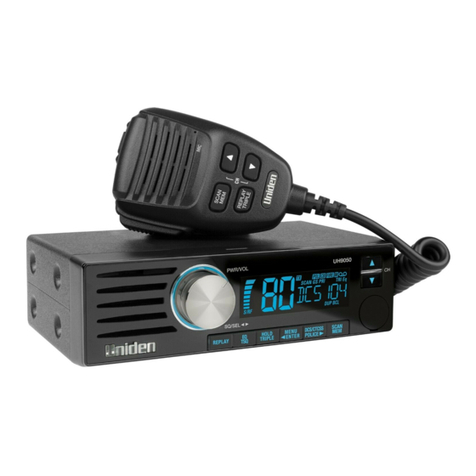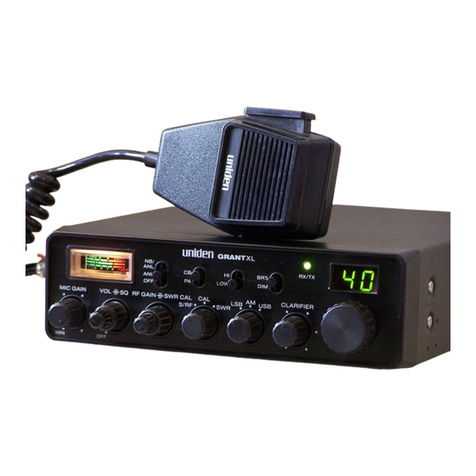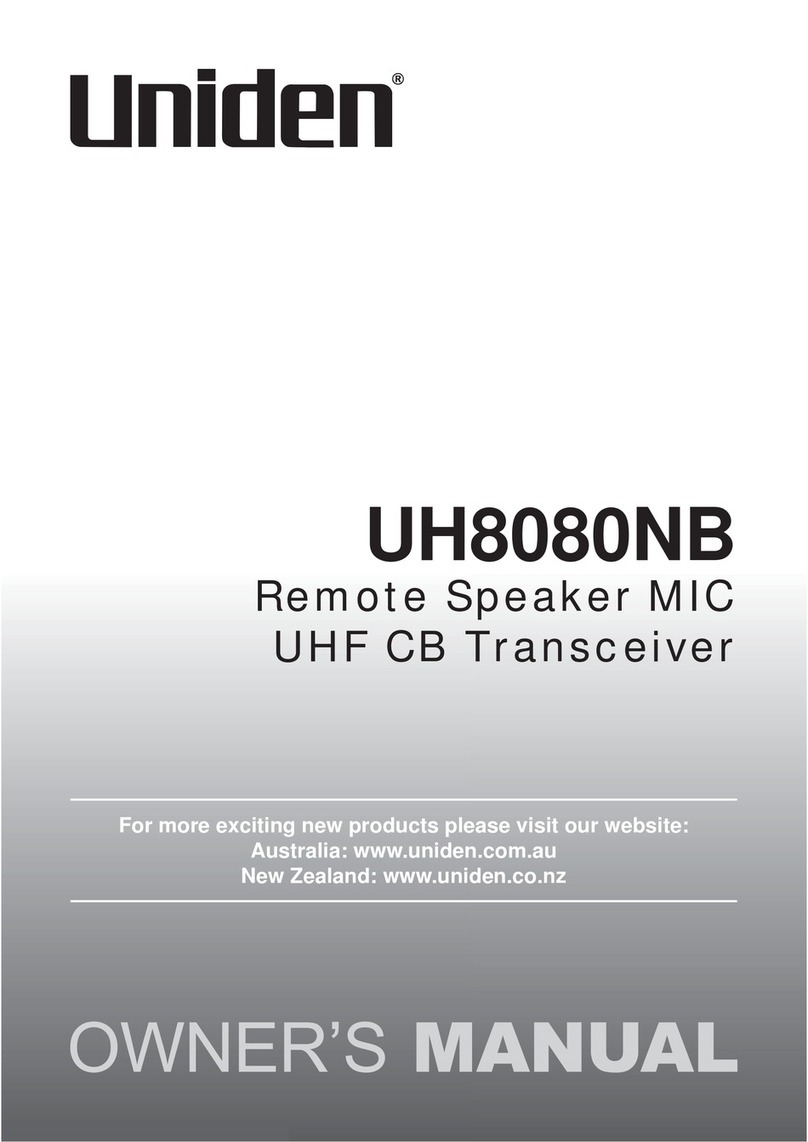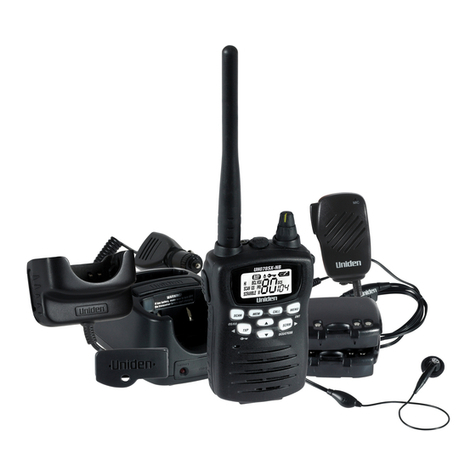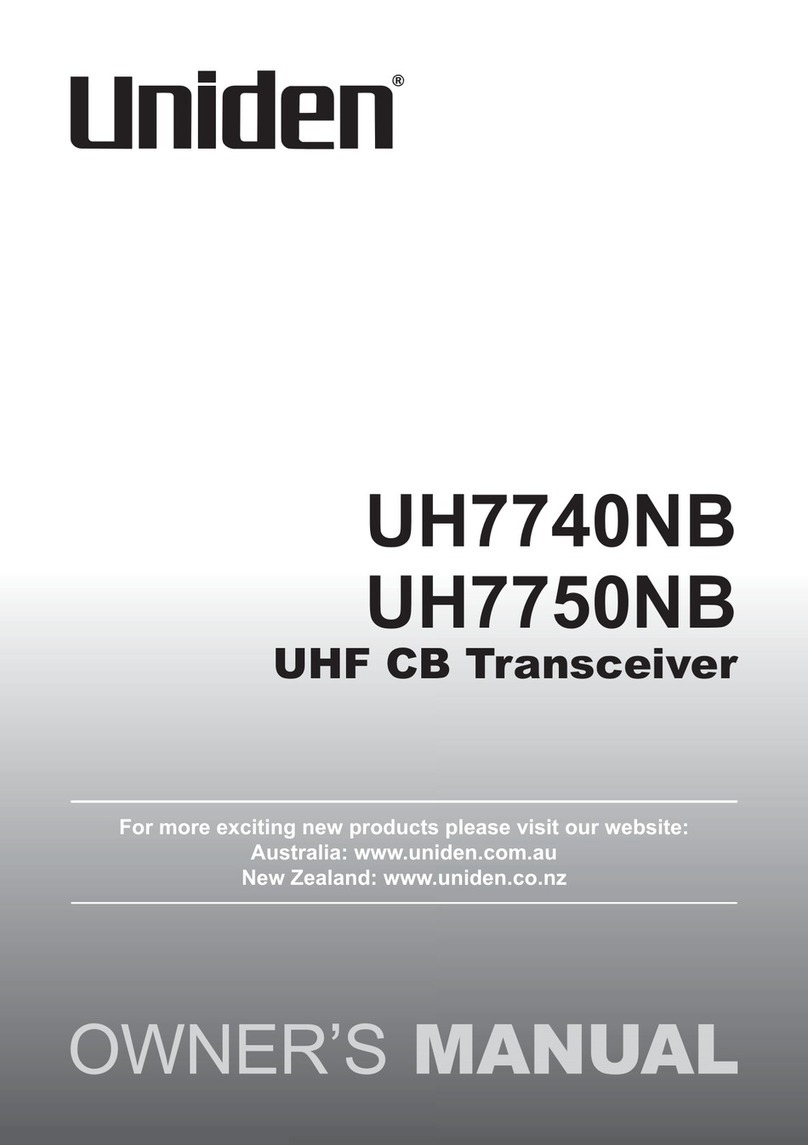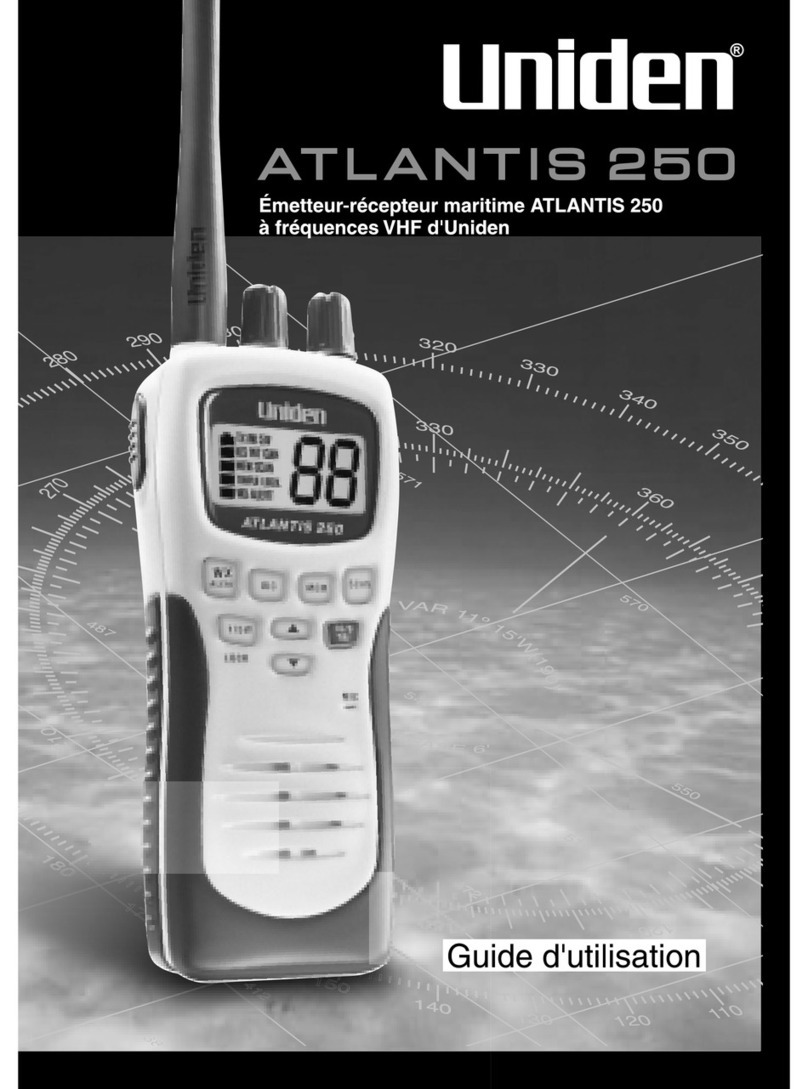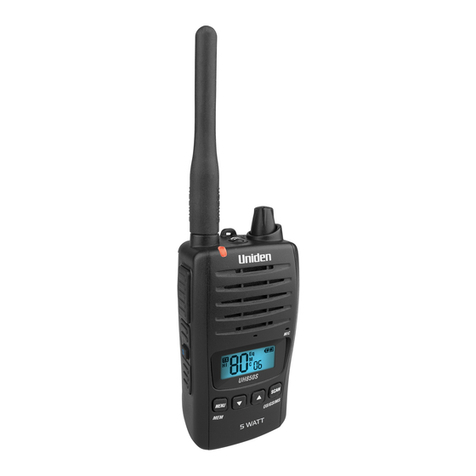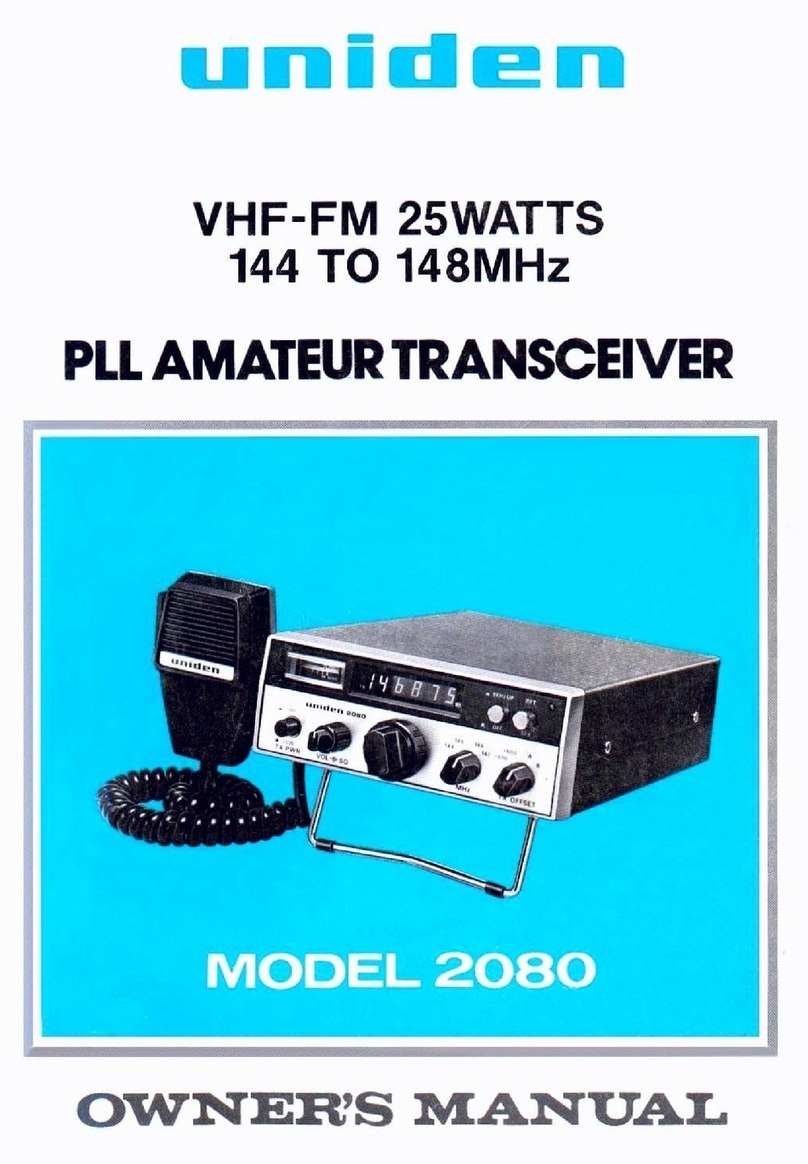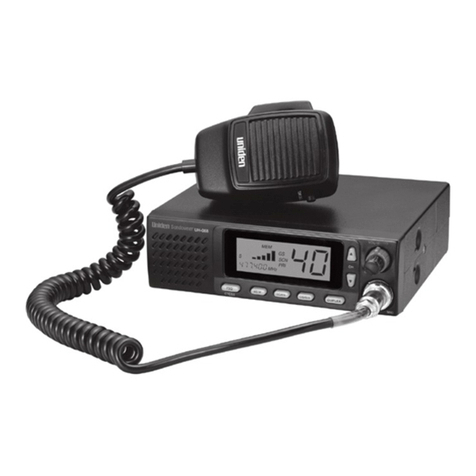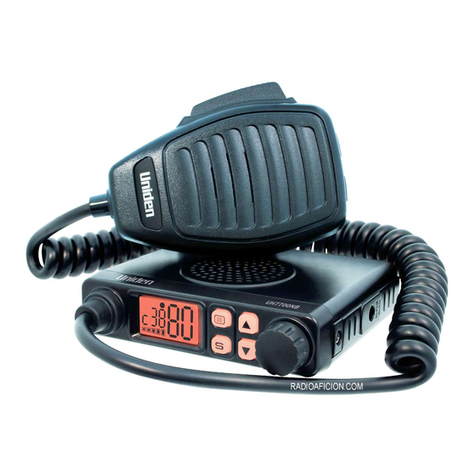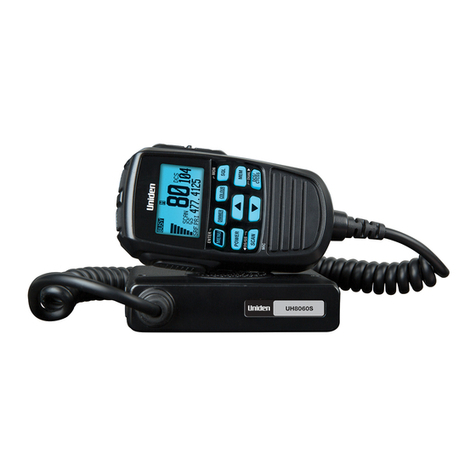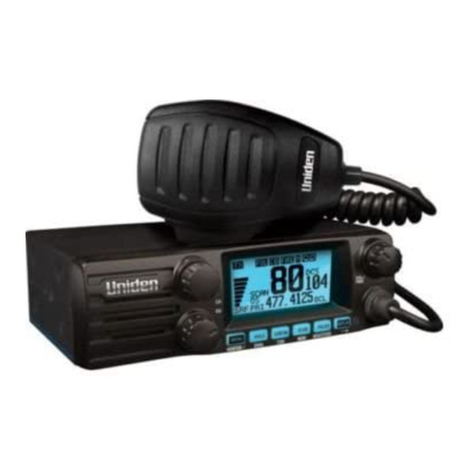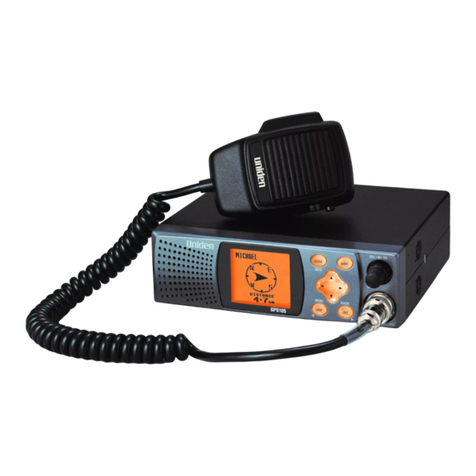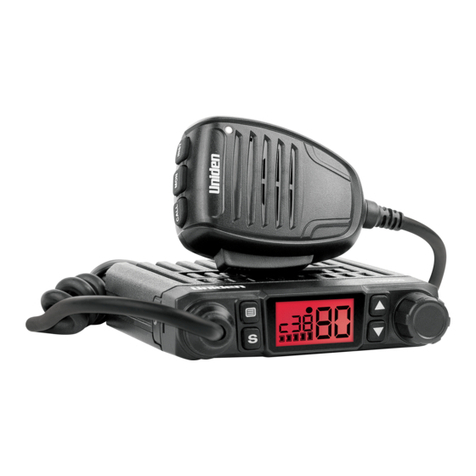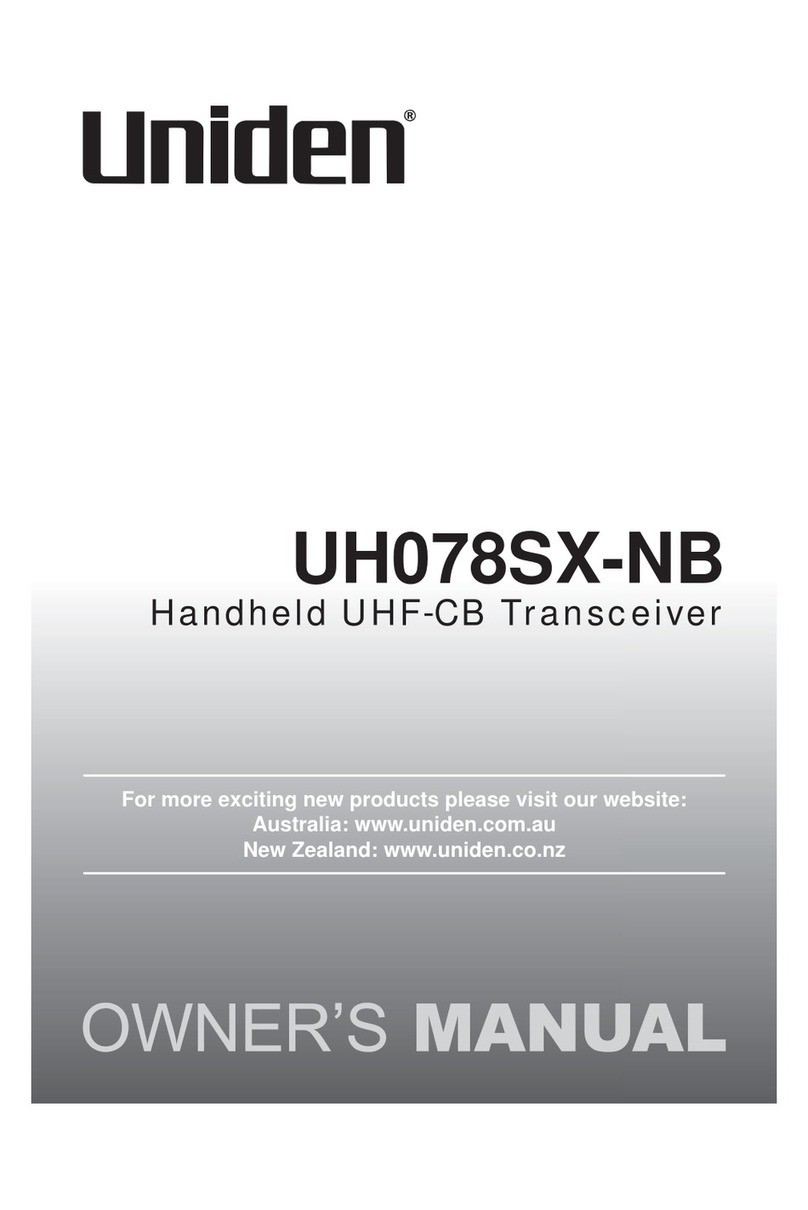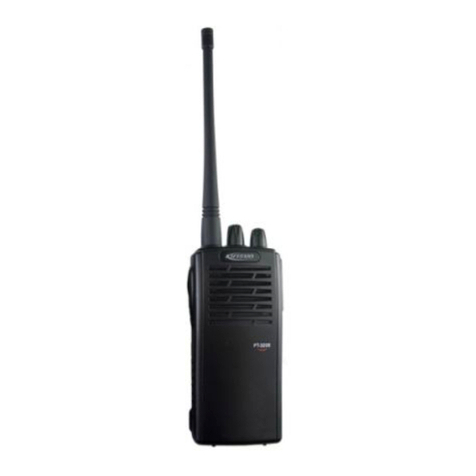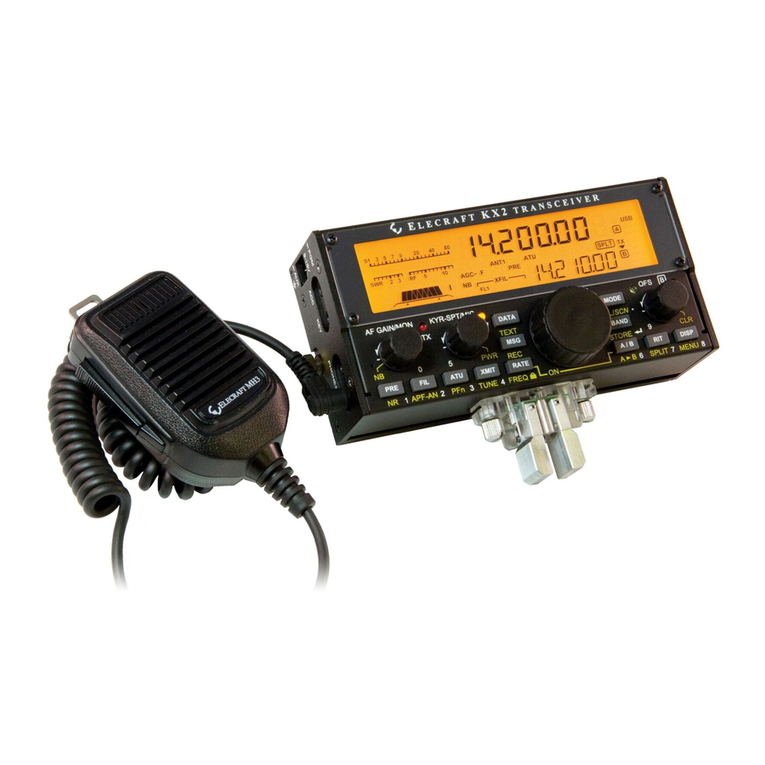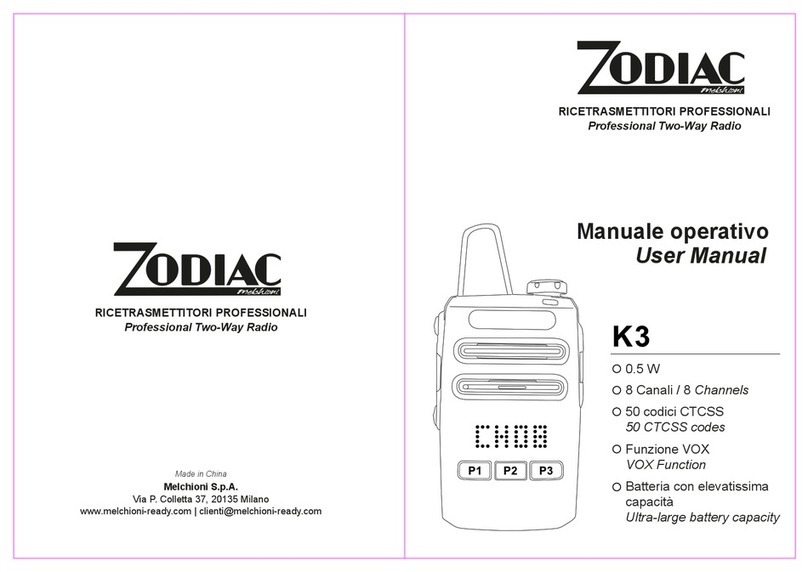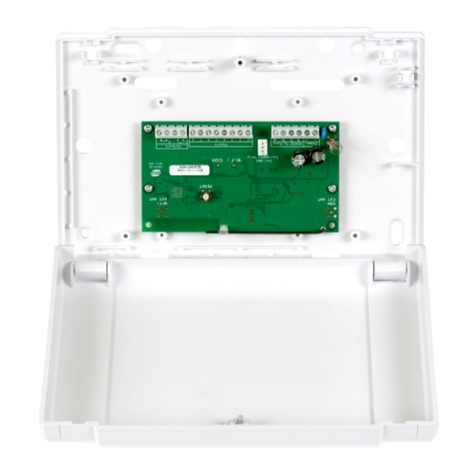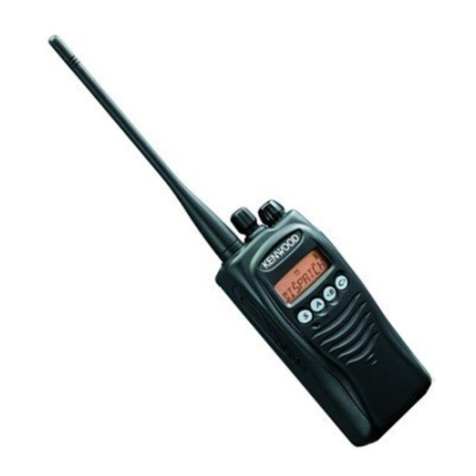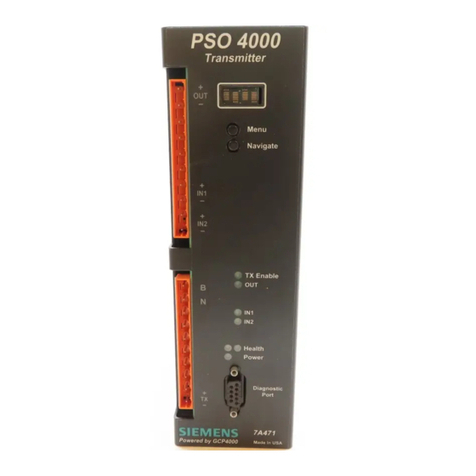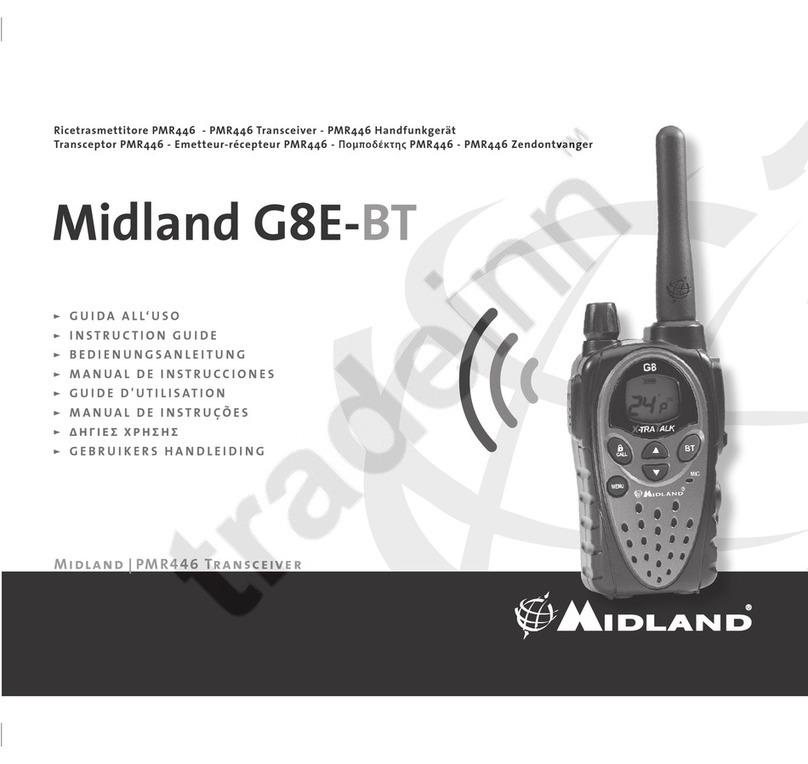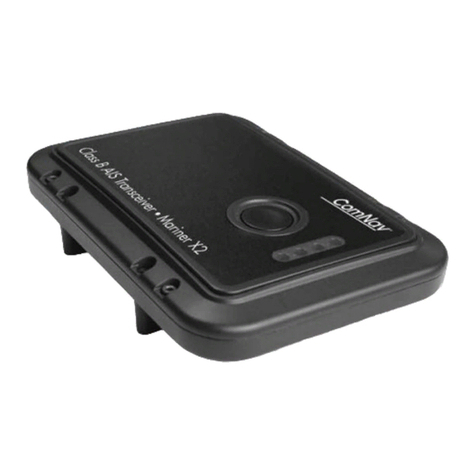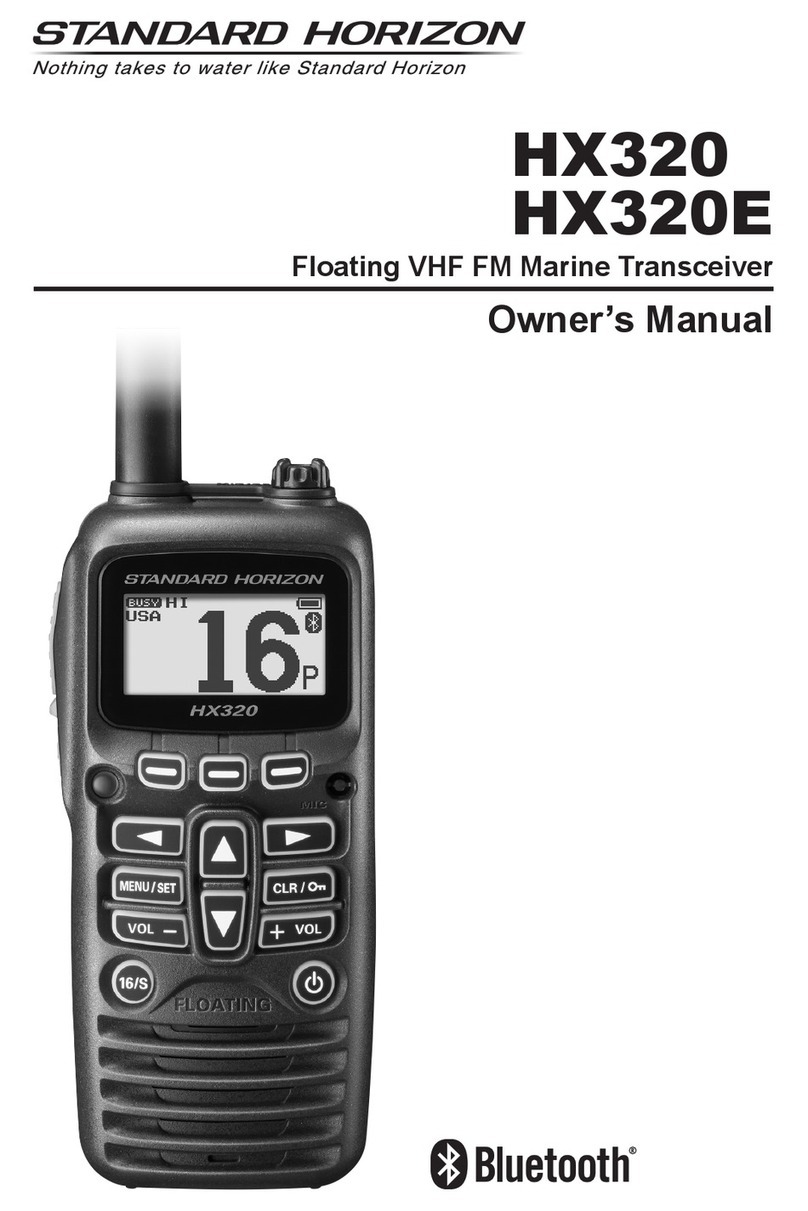GROUP SCANNING
NOTE:
1. If the GROUP SCAN memory has not been programmed wh~nthe GROUP SCAN
Mode isselected by selecting the OS/GS Select switch (4) to the OUT position and the
SCAN switch (3) is selected, the SUNDOWNER UH-077 will ignore the SCAN switch
(3) and will behave as if it had not been pressed.
2. The PRIORITY channel number can easily be read when required by:
(a) Temporarily releasing the SCAN switch.
(b) Pressing the PTT switch. The radio will jump to the PRIORITY channel for 3 sec-
onds before resuming the SCAN function.
To commence GROUP SCANNING, select the GROUP SCAN Mode by selecting the
OS/GS Select switch (4) to the OUT position and select the SCAN mode by selecting
the SCAN switch (3) to the IN position.
The SUNDOWNER UH-077 will now scan the programmed channels, displaying each
channel number and the PRIORITY channel number. Because, before it scans each
channel, itquickly "checks" the PRIORITY channel (set by the CHANNEL SELECTOR
switch).
RECEIVING A SIGNAL ON A GROUP SCAN CHANNEL
Ifa signal is received on a programmed scan channel, the radio will 'lock' onto that channel
provided there is no signal on the PRIORITYchannel.
When the receiver is 'locked' onto the scan channel, and at the same time, the LED chan-
nel display will flash from the scan channel to the PRIORITY channel. This is because the
receiver is still 'listening' for signals on the PRIORITY channel.
When the scan channel becomes quiet again, the radio will continue to hold the channel for
a further 3 seconds in order to allow for a natural pause inthe conversation before resum-
ing the Group Scanning mode.
Ifthere is a transmission on the PRIORITY channel while you are listening to a scan chan-
nel, the receiver will immediately transfer to the PRIORITY channel and the PRIORITY
channel number will be displaye~.
To manually HOLD a scan channel indefinitely, momentarily press the MEM switch. The
radio will cease scanning and will hold the channel, but will continueto DUALWATCHthe
PRIORITY channel.
To RESUME scanning, momentarily press the MEM switch on the front panel or the MEMI
SKIP switch on the microphone, again. The receiver will resume scanning.
To transmit on a Group Scan channel, rotate the channel switch to the required channel,
making it the PRIORITY channel. Return the channel selector to the correct PRIORITY
channel when you have completed your conversation.
-10-
